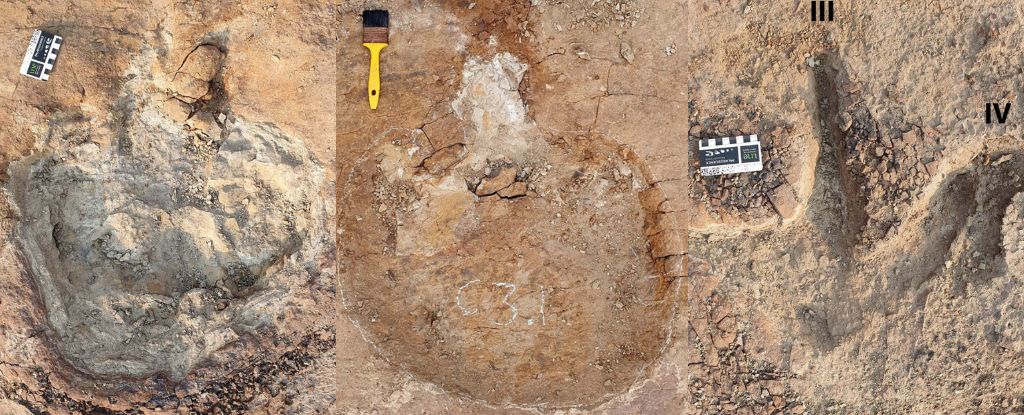
A remarkable discovery at Canada’s Dinosaur Provincial Park has unveiled evidence suggesting that herbivorous dinosaurs may have lived and moved in multi-species herds approximately 76 million years ago. An international team of paleontologists unearthed a set of well-preserved tracks in ironstone, marking the first substantial collection of dinosaur footprints found in this area known for its diverse fossil specimens.
The tracks indicate that at least five species of ceratopsian dinosaurs were present alongside an ankylosaurid. This finding could represent the first conclusive evidence of multi-species herding among dinosaurs, highlighting complex social interactions among these ancient creatures.
Insights from the Trackways
Researchers are cautious about the exact timing of the footprints. While they can confirm that these tracks were made around the same period, there could have been hours or days between the formation of each. According to Jack Lovegrove, a paleontologist at the Natural History Museum in London, “Ceratopsians have long been suspected to have lived in herds due to the existence of bone beds which preserve multiple individuals of the same species together. However, these bone beds only tell us for certain that these animals died together or the bodies accumulated after death.” The newly discovered trackways provide rare evidence of these animals moving together, suggesting they may have been social creatures.
The arrangement of the footprints hints that the dinosaurs were likely visiting a water source, potentially following an ancient river. Interestingly, additional tracks running parallel to the waterline suggest the presence of predators in the area. Specifically, tracks from two tyrannosaurs and another small, carnivorous dinosaur, possibly a therapod, indicate that these predators may have been stalking the herd.
Implications of the Discovery
The discovery not only offers a glimpse into the past but also raises questions about the dynamics between herbivores and predators in the Cretaceous period. Phil Bell, a paleontologist from the University of New England in Australia, remarked, “The tyrannosaur tracks give the sense that they were really eyeing up the herd, which is a pretty chilling thought, but we don’t know for certain whether they actually crossed paths.”
This finding, described by Lovegrove as more of a montage of Cretaceous life, opens the door for further exploration of trackways within the park. Researchers anticipate that this will yield additional insights into how various dinosaur species coexisted in their environments.
The research detailing these findings has been published in the journal PLOS One, contributing significantly to the understanding of dinosaur behavior and social structures. As scientists continue to study these tracks, they hope to uncover more details about the ancient ecosystems in which these fascinating creatures thrived.






